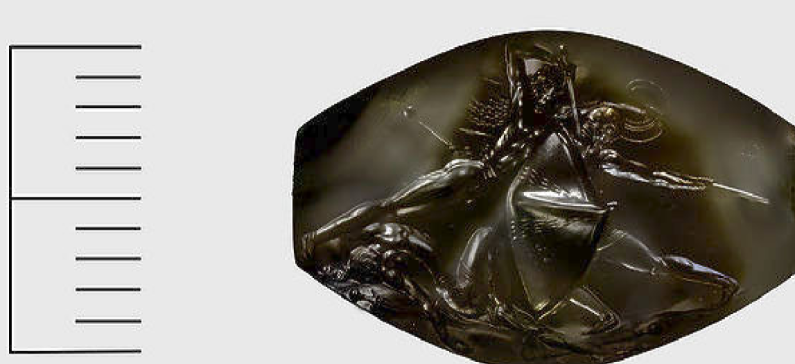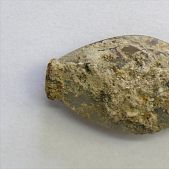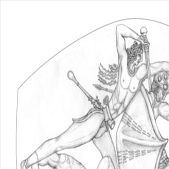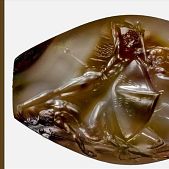
A Grecian artifact evokes tales from the ‘Iliad’ and ‘Odyssey’
A seal discovered in Pylos has left scientists speechless. On an agate gem, that was found in the “Tomb of the Warrior” in Pylos and dates back to 1500 BC, there is a carving which depicts three warriors in battle. Two years ago, archaeologists excavating an ancient grave at Pylos in southwestern Greece pulled out a grime-encrusted object, less than an inch and half long, that looked like some kind of large bead. They put it aside to focus on more prominent items, like gold rings, that also were packed into the rich grave.
But later, as a conservator removed the lime accretions on the bead’s face, it turned out to be something quite different: a seal stone, a gemstone engraved with a design that can be stamped on clay or wax. The seal stone’s image, a striking depiction of one warrior in battle with two others, is carved in remarkably fine detail, with some features that are barely visible to the naked eye. The image is easier to appreciate in a large-scale drawing of the original.
“The detail is astonishing, especially given the size. Aesthetically, it’s a masterpiece of miniature art,” said John Bennet, director of the British School at Athens, at New York Times.
“The stunning combat scene on the seal stone, one of the greatest masterpieces of Aegean art, bears comparison with some of the drawings in the Michelangelo show now at the Metropolitan Museum of Art,” said Malcolm H. Wiener, an expert on Aegean prehistory and a trustee emeritus of the Met.
The seal stone comes from an untouched shaft grave near the ancient palace of Pylos. The grave was discovered in May 2015 by Jack L. Davis and Sharon R. Stocker, archaeologists at the University of Cincinnati who had been digging at Pylos for more than 25 years.
The seal stone presents two mysteries. One is how and why it was engraved in such detail. The other is whether its battle scene, strongly evocative of those in Homer’s “Iliad” and “Odyssey,” depicts an event that contributed to the oral tradition behind the works of Homer.
The seal stone’s owner, known as the Griffin Warrior after the mythical animal depicted in his grave, was buried around 1450 B.C. He lived at a critical period when the Minoan civilization of Crete was being transferred to cities of the Greek mainland.
Local chieftains, as the Griffin Warrior may have been, used precious items from Crete to advertise their membership in the Greek-speaking elite of the incipient Mycenaean civilization, the first on mainland Europe. Their descendants, a century or so later, built the great palaces at Pylos, Mycenae and Tiryns, places mentioned by Homer.
Dr. Davis and Dr. Stocker believe that the seal stone, like other objects in the Griffin Warrior’s grave, was made on Crete. Work of such quality was not being produced anywhere on the Greek mainland at the time. The detail is so fine that it seems the engraver would have needed a magnifying glass, as would admirers of his work.
Yet no magnifying implements have been found on Crete from this era. Perhaps the engraver was nearsighted, the two archaeologists suggest.
Fritz Blakolmer, an expert on Aegean art at the University of Vienna, argues that the seal stone is a miniature copy of a much larger original, probably a stucco-embellished wall painting like those found at the Palace of Knossos on Crete. He said the seal must have been engraved by someone with a magnifying glass, even though none has been found, and dismissed the possibility that people of that era had sharper eyesight than today.











